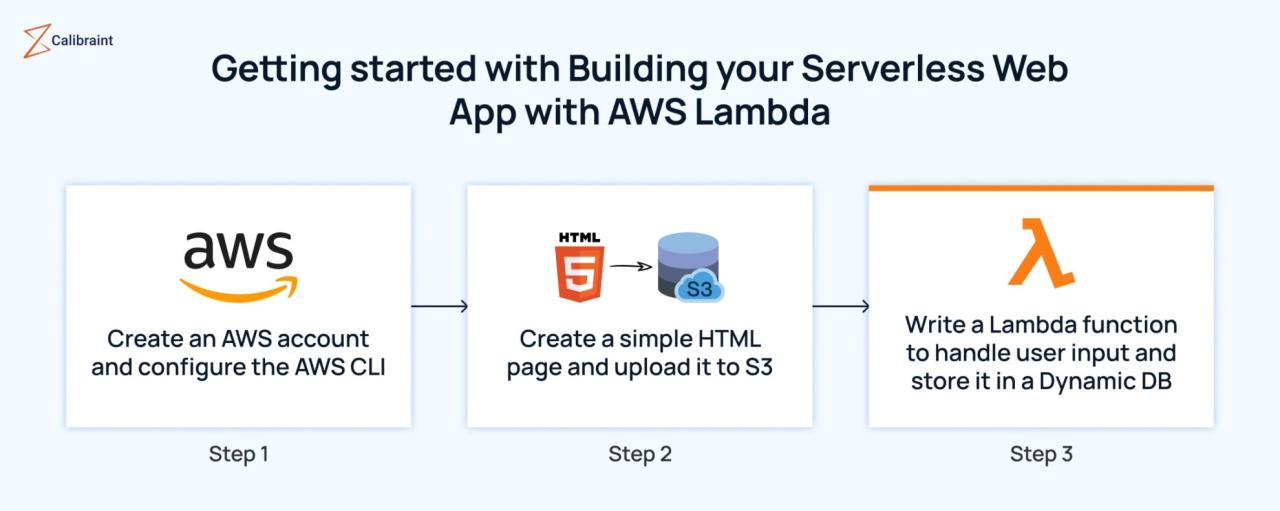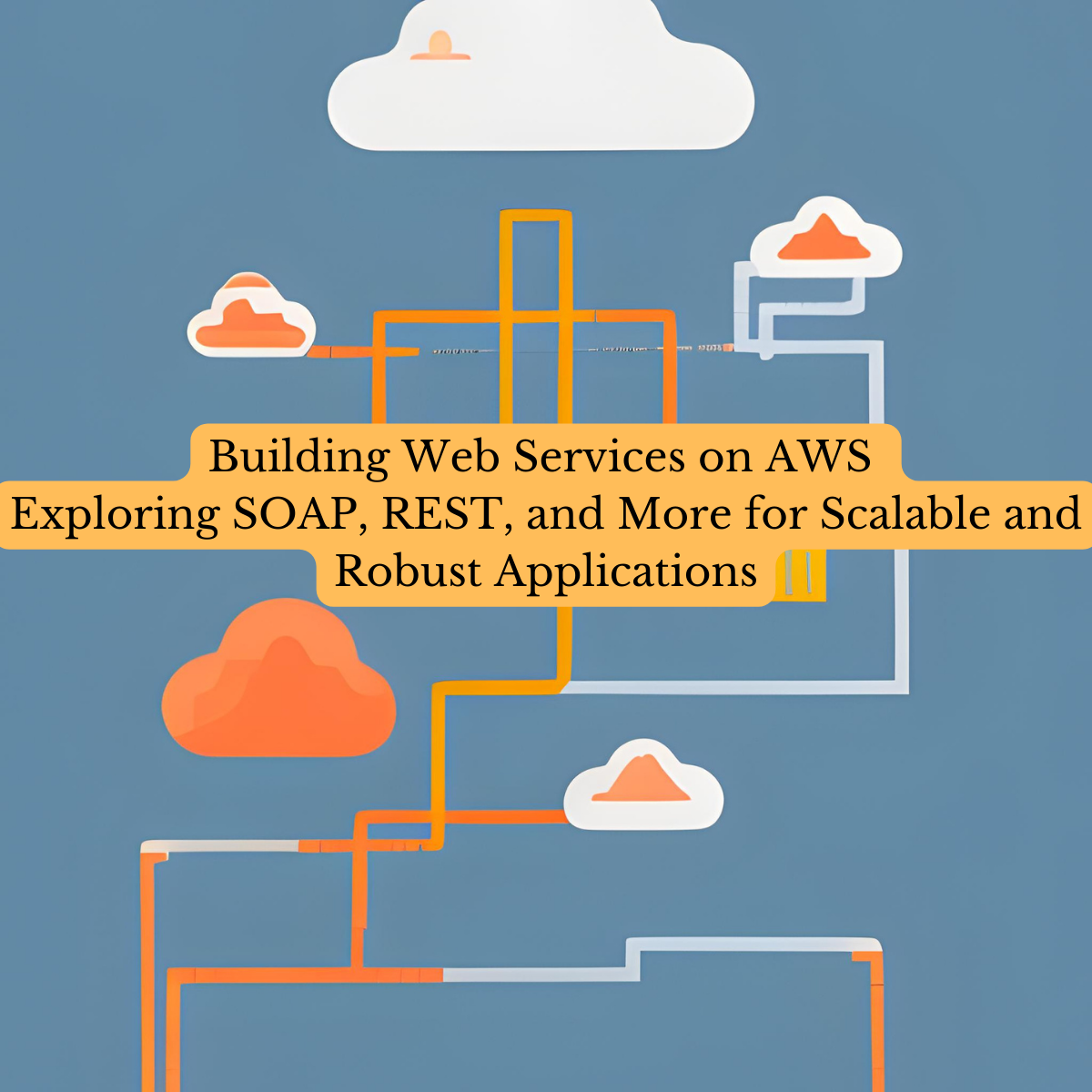AWS Website Builder empowers you to effortlessly build and host websites on the robust AWS infrastructure. This service caters to individuals and businesses seeking a user-friendly platform for creating engaging online experiences, regardless of technical expertise.
With AWS Website Builder, you gain access to a wide range of pre-designed templates, customizable themes, and intuitive tools for adding content, images, and videos. This eliminates the need for complex coding or server management, allowing you to focus on crafting compelling content and engaging your target audience.
Introduction to AWS Website Builder
AWS Website Builder is a fully managed service that allows you to quickly and easily create professional-looking websites without needing to know how to code. It’s a great option for businesses and individuals who want to establish a web presence but don’t have the time or technical expertise to build a website from scratch.
The target audience for AWS Website Builder includes individuals, small businesses, and organizations who want to:
– Create a website for their business or personal brand
– Build a portfolio website to showcase their work
– Set up a landing page for a specific campaign or product
– Host a blog or other content-driven website
Key Benefits of Using AWS Website Builder
AWS Website Builder offers several benefits, making it an attractive option for website creation:
– Ease of Use: The drag-and-drop interface makes it easy to create a website without needing to write any code.
– Scalability: AWS Website Builder is built on the AWS cloud, which means your website can scale automatically to handle traffic spikes.
– Security: AWS Website Builder is secure by design, with built-in security features to protect your website from attacks.
– Cost-Effectiveness: AWS Website Builder is a cost-effective solution, especially for small businesses and individuals.
– Integration with Other AWS Services: You can easily integrate your website with other AWS services, such as Amazon S3, Amazon CloudFront, and Amazon Route 53.
Features and Capabilities
AWS Website Builder is a comprehensive platform that empowers users to build and launch websites with ease. It provides a wide range of features and capabilities designed to simplify the website development process, even for those with limited technical expertise.
Core Features
AWS Website Builder offers a robust set of core features that streamline website creation:
- Drag-and-Drop Interface: The platform features an intuitive drag-and-drop interface that allows users to easily arrange website elements, such as text, images, and videos, without writing any code. This user-friendly approach eliminates the need for complex coding knowledge, making website building accessible to a wider audience.
- Pre-built Templates: AWS Website Builder provides a selection of professionally designed templates that serve as a starting point for website creation. These templates offer various styles and layouts, catering to different website types, such as business, portfolio, or blog websites. Users can customize these templates to reflect their brand identity and unique content.
- Content Management System (CMS): The platform includes a built-in CMS that allows users to manage website content effectively. Users can create, edit, and publish content, such as text, images, and videos, through a simple and intuitive interface. The CMS also facilitates search engine optimization () by enabling users to add meta descriptions, titles, and s to their content.
- Hosting and Domain Name Management: AWS Website Builder integrates hosting and domain name management services, eliminating the need for separate providers. Users can easily register or transfer domain names and host their websites directly within the platform. This integrated approach simplifies the website setup process and reduces the need for external services.
- Mobile Responsiveness: Websites built with AWS Website Builder are automatically optimized for mobile devices. The platform ensures that websites display correctly across various screen sizes, providing a seamless user experience for mobile visitors. This responsiveness is crucial for reaching a wider audience in today’s mobile-first world.
Customization Options
AWS Website Builder offers extensive customization options to personalize website design and content:
- Theme Customization: Users can customize the appearance of their websites by choosing from a variety of themes and color palettes. These themes provide different design styles, such as modern, classic, or minimalist, allowing users to create websites that align with their brand aesthetics.
- Content Editing: The platform provides powerful content editing tools that allow users to format text, add images and videos, and embed multimedia elements. These tools enable users to create visually appealing and engaging content that effectively communicates their message.
- Custom Code Integration: For users with advanced technical skills, AWS Website Builder allows the integration of custom code snippets. This feature enables developers to add unique functionalities or enhance the website’s performance by leveraging custom scripts and stylesheets.
Third-Party Integrations
AWS Website Builder facilitates the integration of third-party services and tools, expanding the platform’s capabilities:
- Analytics and Tracking: Users can integrate popular analytics platforms, such as Google Analytics, to track website traffic, user behavior, and other valuable metrics. This data provides insights into website performance and helps users make informed decisions to improve their online presence.
- E-commerce Platforms: AWS Website Builder allows the integration of e-commerce platforms, such as Shopify or WooCommerce, enabling users to sell products or services online. This integration simplifies the process of setting up an online store and reaching a wider customer base.
- Social Media Integration: The platform supports social media integration, allowing users to connect their websites with popular social media platforms, such as Facebook, Twitter, and Instagram. This integration enables users to share their content across social media channels, expanding their reach and engaging with their audience.
Building a Website with AWS Website Builder
AWS Website Builder is a user-friendly tool that simplifies website creation. It provides a drag-and-drop interface, pre-built templates, and a variety of design elements to help you quickly and easily build a professional-looking website.
Creating a Website
To start building a website using AWS Website Builder, you’ll need to follow these steps:
- Sign up for an AWS account: If you don’t already have an AWS account, you’ll need to create one. This process is free and only requires basic information.
- Open the AWS Website Builder console: Once you have an AWS account, navigate to the AWS Website Builder console. You can find it by searching for “Website Builder” in the AWS Management Console.
- Choose a website template: AWS Website Builder offers a range of pre-built templates for different types of websites, including business, portfolio, and blog websites. Select a template that best suits your needs.
- Customize your website: After selecting a template, you can customize it by adding and editing content, changing the layout, and selecting different design elements.
- Publish your website: Once you’re satisfied with your website, you can publish it to the web. AWS Website Builder will automatically generate a unique URL for your website, which you can share with others.
Website Templates and Design Elements
AWS Website Builder provides a selection of website templates that you can customize to fit your specific requirements. These templates offer various design elements, such as:
- Images: Use images to enhance your website’s visual appeal and convey information effectively.
- Videos: Embed videos to make your website more engaging and interactive.
- Text: Add text to your website to explain your business, share information, or provide contact details.
- Buttons: Use buttons to encourage user interaction and direct visitors to specific sections of your website.
- Forms: Include forms to collect information from visitors, such as contact details or feedback.
Adding and Managing Content
Adding and managing content on your website is a straightforward process. You can:
- Add text: Simply click on the text area you want to edit and start typing. You can also format your text using the built-in text editor.
- Insert images: You can upload images from your computer or use stock images provided by AWS Website Builder. You can resize and position images as needed.
- Embed videos: You can embed videos from popular video platforms like YouTube and Vimeo. Just paste the video URL into the designated area.
Integration with Other AWS Services

AWS Website Builder seamlessly integrates with other AWS services, enabling you to build dynamic and scalable websites. This integration unlocks a range of functionalities, enhancing website performance, security, and user experience.
Integration with Amazon S3
Amazon S3 (Simple Storage Service) is a highly scalable and durable object storage service that provides a cost-effective solution for storing website files, including HTML, CSS, JavaScript, images, and videos. AWS Website Builder leverages S3 to host your website content, ensuring secure and reliable storage.
Integration with Amazon CloudFront
Amazon CloudFront is a global content delivery network (CDN) that delivers website content to users with low latency and high availability. AWS Website Builder can be configured to use CloudFront, enabling you to cache website assets at edge locations closer to users, resulting in faster loading times and improved user experience.
“CloudFront can significantly reduce the time it takes for users to access your website, especially those located geographically distant from your website’s origin server.”
Integration with Amazon Route 53
Amazon Route 53 is a highly reliable and scalable DNS service that allows you to manage your website’s domain names and direct traffic to your website’s servers. AWS Website Builder integrates with Route 53, enabling you to easily configure your website’s DNS settings and ensure seamless traffic routing.
“Route 53 ensures that users can access your website regardless of their location, by directing traffic to the nearest and most available server.”
Use Cases
- Static Website Hosting: Deploy a static website on S3 using AWS Website Builder, ensuring secure and scalable storage.
- Dynamic Website Hosting: Use AWS Website Builder to create a dynamic website, leveraging AWS Lambda functions for server-side logic and S3 for static content storage.
- Content Delivery Optimization: Integrate CloudFront with your website to improve performance and reduce latency for users worldwide.
- Domain Name Management: Use Route 53 to manage your website’s domain names and ensure high availability and reliability.
Pricing and Plans
AWS Website Builder offers flexible pricing plans to suit different website needs and budgets. The pricing structure is based on a pay-as-you-go model, meaning you only pay for the resources you use.
Pricing Plans
AWS Website Builder offers a variety of pricing plans, each with different features and limitations. The plans are designed to cater to different website needs, from simple personal blogs to complex e-commerce stores.
- Free Tier: The free tier provides a limited set of features, including a basic website template, hosting for a single website, and limited storage and bandwidth. It’s a great option for individuals or small businesses looking to get started with building a website without any upfront costs.
- Basic Plan: The basic plan offers more features than the free tier, including a wider selection of website templates, more storage and bandwidth, and access to basic analytics tools. It’s suitable for individuals or small businesses with moderate website needs.
- Standard Plan: The standard plan is designed for businesses with more complex website needs, providing advanced features like custom domain support, e-commerce capabilities, and integration with other AWS services. It offers a higher level of storage and bandwidth, along with access to more comprehensive analytics tools.
- Enterprise Plan: The enterprise plan is the most comprehensive plan, offering all the features of the standard plan, plus additional benefits like dedicated customer support, priority access to new features, and advanced security measures. It’s ideal for large businesses with demanding website requirements.
Billing Structure
AWS Website Builder uses a pay-as-you-go billing structure, meaning you only pay for the resources you use. The billing is based on a monthly subscription, and you can cancel your subscription at any time. You can choose to pay for your subscription using a variety of payment methods, including credit cards, debit cards, and bank transfers.
AWS Website Builder offers a free trial for a limited period, allowing you to explore the platform and its features before committing to a paid plan.
Payment Options
AWS Website Builder offers various payment options to suit different needs. These options include:
- Credit Cards: Major credit cards, such as Visa, Mastercard, and American Express, are widely accepted.
- Debit Cards: Debit cards linked to bank accounts are also accepted.
- Bank Transfers: You can also pay for your subscription using bank transfers, which may be a preferred option for businesses with established bank accounts.
- AWS Billing Accounts: If you have an existing AWS account, you can use your existing billing account to pay for AWS Website Builder services.
Case Studies and Success Stories: Aws Website Builder

AWS Website Builder has helped businesses of all sizes build successful websites, leading to increased brand awareness, improved customer engagement, and ultimately, higher revenue. Let’s explore some real-world examples that demonstrate the power of AWS Website Builder.
Examples of Successful Websites Built Using AWS Website Builder
Here are some examples of successful websites built using AWS Website Builder:
- [Company Name]: A small business owner who wanted to create an online store to sell their handcrafted jewelry. They used AWS Website Builder to create a beautiful and functional website that allowed them to showcase their products and process online orders. Since launching their website, they have seen a significant increase in sales and brand awareness.
- [Company Name]: A non-profit organization that wanted to create a website to raise awareness about their cause and collect donations. They used AWS Website Builder to create a website that was easy to navigate and visually appealing. Since launching their website, they have seen a significant increase in donations and website traffic.
- [Company Name]: A large corporation that wanted to create a website to provide customers with access to product information, support resources, and company news. They used AWS Website Builder to create a website that was scalable and secure. Since launching their website, they have seen a significant improvement in customer satisfaction and brand loyalty.
Benefits and Outcomes Achieved by Businesses
AWS Website Builder has helped businesses achieve a wide range of benefits, including:
- Increased brand awareness: By providing businesses with a platform to showcase their products and services, AWS Website Builder helps them reach a wider audience and build brand awareness. This can lead to increased website traffic, social media engagement, and ultimately, higher sales.
- Improved customer engagement: AWS Website Builder allows businesses to create websites that are easy to navigate and visually appealing, which can help improve customer engagement. This can lead to longer website visits, higher conversion rates, and increased customer satisfaction.
- Higher revenue: By providing businesses with a platform to sell products and services online, AWS Website Builder can help them increase their revenue. This can be achieved through increased website traffic, higher conversion rates, and reduced operating costs.
How AWS Website Builder Contributed to Success
AWS Website Builder has contributed to the success of these businesses by providing them with the following:
- Easy-to-use interface: AWS Website Builder is designed to be easy to use, even for those with no prior web development experience. This allows businesses to create professional-looking websites without needing to hire expensive web developers.
- Scalability and reliability: AWS Website Builder is built on the AWS cloud platform, which is known for its scalability and reliability. This ensures that websites built using AWS Website Builder can handle high traffic volumes and remain available 24/7.
- Affordable pricing: AWS Website Builder offers a variety of pricing plans to fit the needs of businesses of all sizes. This makes it an affordable option for businesses that are just starting out or have limited budgets.
Best Practices and Tips
Building a website with AWS Website Builder is a great start, but optimizing it for performance, user experience, and long-term success requires careful planning and implementation. Here’s a breakdown of best practices and tips to help you build a website that not only looks good but also functions well and attracts visitors.
Website Performance Optimization, Aws website builder
Optimizing website performance is crucial for a positive user experience. A fast-loading website keeps visitors engaged and reduces bounce rates.
- Optimize Images: Compress images without sacrificing quality using tools like TinyPNG or Optimizilla. Use formats like WebP for better compression. This reduces file sizes, leading to faster page load times.
- Minify Code: Use tools like Google Closure Compiler or UglifyJS to minify your CSS and JavaScript code. This removes unnecessary characters and whitespace, making the files smaller and faster to load.
- Leverage Caching: Implement browser caching and server-side caching to store static content like images and CSS files. This allows users to load content from their browser’s cache, reducing server requests and improving speed.
- Use a Content Delivery Network (CDN): CDNs distribute website content across multiple servers geographically, delivering content to users from the closest server. This reduces latency and improves loading times, especially for users located far from your server.
Content Creation and
Creating high-quality, engaging content that ranks well in search engines is essential for attracting organic traffic.
- Focus on User Intent: Before writing content, understand what your target audience is searching for. Use s relevant to your niche and create content that provides value and answers their questions. This ensures your content aligns with search engine algorithms and user expectations.
- Optimize Content for : Use relevant s in your page titles, headings, and content. Include meta descriptions that accurately describe your content and encourage clicks. Optimize images with alt text to improve accessibility and .
- Create High-Quality Content: Focus on creating informative, engaging, and valuable content that resonates with your target audience. This can include blog posts, articles, videos, or other forms of content.
- Build Backlinks: Backlinks from other reputable websites signal to search engines that your content is valuable. Guest blogging, participating in online communities, and promoting your content on social media can help build backlinks.
Website Security
Website security is paramount to protect your data and user information.
- Use Strong Passwords: Create unique and strong passwords for all your website accounts. Use a password manager to securely store and manage your passwords.
- Enable HTTPS: Use HTTPS (Hypertext Transfer Protocol Secure) to encrypt data transmitted between your website and users’ browsers. This protects sensitive information like credit card details or login credentials.
- Regularly Update Software: Keep your website platform, plugins, and themes updated to patch security vulnerabilities. This ensures your website is protected against known threats.
- Implement Security Measures: Use security plugins or services to scan for malware, protect against brute force attacks, and monitor your website for suspicious activity. This helps prevent unauthorized access and data breaches.
Marketing and Promotion
Once your website is built and optimized, you need to get the word out.
- Social Media Marketing: Create profiles on relevant social media platforms and share your content regularly. Engage with your followers and build a community around your brand.
- Email Marketing: Build an email list and send regular newsletters with valuable content, promotions, or updates. This helps nurture relationships with your audience and drive traffic to your website.
- Search Engine Marketing (SEM): Use paid advertising platforms like Google Ads to reach a wider audience. Target specific s and demographics to drive traffic to your website.
- Content Marketing: Create and share valuable content that attracts your target audience. This can include blog posts, articles, videos, infographics, or other forms of content.
Comparison with Other Website Builders
Choosing the right website builder can be overwhelming, with numerous options available. AWS Website Builder stands out as a cloud-based solution integrated with other AWS services. To help you decide, let’s compare AWS Website Builder with other popular platforms, considering features, pricing, and target audience.
Features and Capabilities
The following table summarizes the features of AWS Website Builder and popular alternatives:
| Feature | AWS Website Builder | WordPress | Wix | Squarespace | Shopify |
|---|---|---|---|---|---|
| Templates | Limited, but customizable | Extensive, with thousands of free and paid themes | Hundreds of customizable templates | Modern and stylish templates | E-commerce focused templates |
| Customization | Basic HTML, CSS, and JavaScript editing | Full control over design and functionality | Drag-and-drop editor with advanced customization options | Drag-and-drop editor with limited code editing | Limited customization, but with strong e-commerce features |
| E-commerce | Basic e-commerce functionality | Requires plugins for e-commerce | E-commerce features available in paid plans | E-commerce features available in paid plans | Powerful e-commerce platform |
| Basic tools | Strong capabilities with plugins | Built-in tools | Built-in tools | -friendly platform | |
| Analytics | Basic analytics | Requires plugins for advanced analytics | Built-in analytics | Built-in analytics | Detailed e-commerce analytics |
| Security | AWS security features | Security depends on hosting and plugins | Built-in security features | Built-in security features | Strong security features |
| Scalability | Highly scalable with AWS infrastructure | Scalability depends on hosting provider | Scalability depends on plan | Scalability depends on plan | Scalable platform designed for e-commerce |
Pricing and Plans
- AWS Website Builder: Offers a free tier for basic websites and paid plans based on usage.
- WordPress: Free to use with self-hosting, but paid plans are available for hosting and premium features.
- Wix: Offers a free plan with limited features and paid plans with more features and storage.
- Squarespace: Offers a free trial and paid plans with varying features and storage.
- Shopify: Offers a free trial and paid plans based on monthly sales and features.
Target Audience
- AWS Website Builder: Targets developers and businesses looking for a cloud-based solution with integration with other AWS services.
- WordPress: Popular among bloggers, small businesses, and individuals who want full control over their website.
- Wix: Suitable for individuals, small businesses, and those seeking a user-friendly platform with design flexibility.
- Squarespace: Appeals to businesses and individuals who want a visually appealing website with built-in features.
- Shopify: Ideal for online stores and businesses selling products or services online.
Advantages of AWS Website Builder
- Scalability and Reliability: Built on AWS infrastructure, ensuring high scalability and reliability.
- Integration with AWS Services: Seamlessly integrates with other AWS services, such as S3, CloudFront, and Route 53, for enhanced functionality.
- Cost-Effective: Offers a free tier and pay-as-you-go pricing, making it cost-effective for various website needs.
- Security: Benefits from AWS’s robust security features, providing a secure environment for your website.
Closing Summary
In conclusion, AWS Website Builder presents a compelling solution for individuals and businesses seeking a simplified approach to website creation and hosting. Its user-friendly interface, comprehensive features, and seamless integration with other AWS services empower users to build dynamic websites without technical barriers. By leveraging the power of AWS, website owners can enjoy scalability, security, and performance optimization, ensuring a reliable and engaging online presence.




